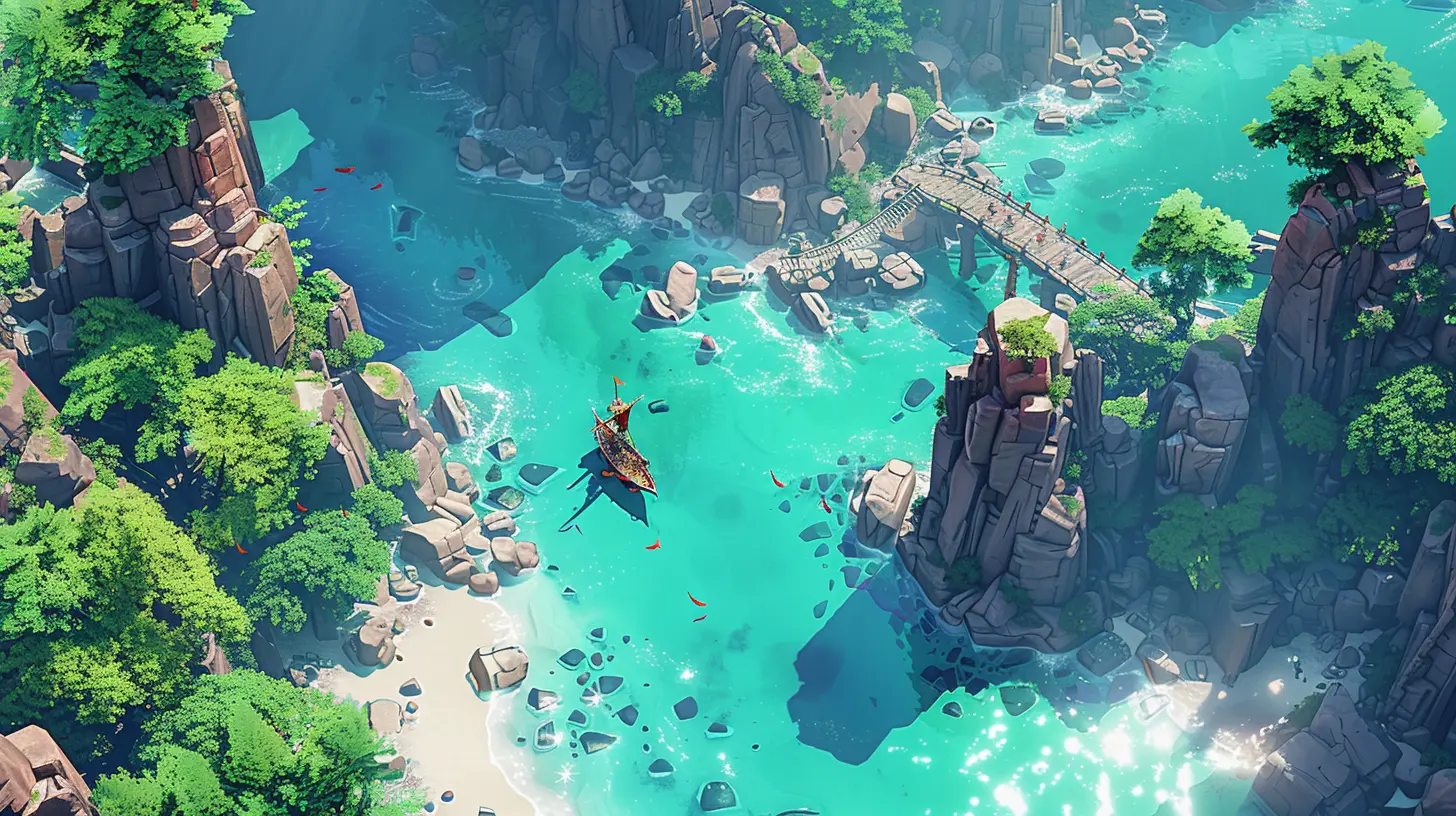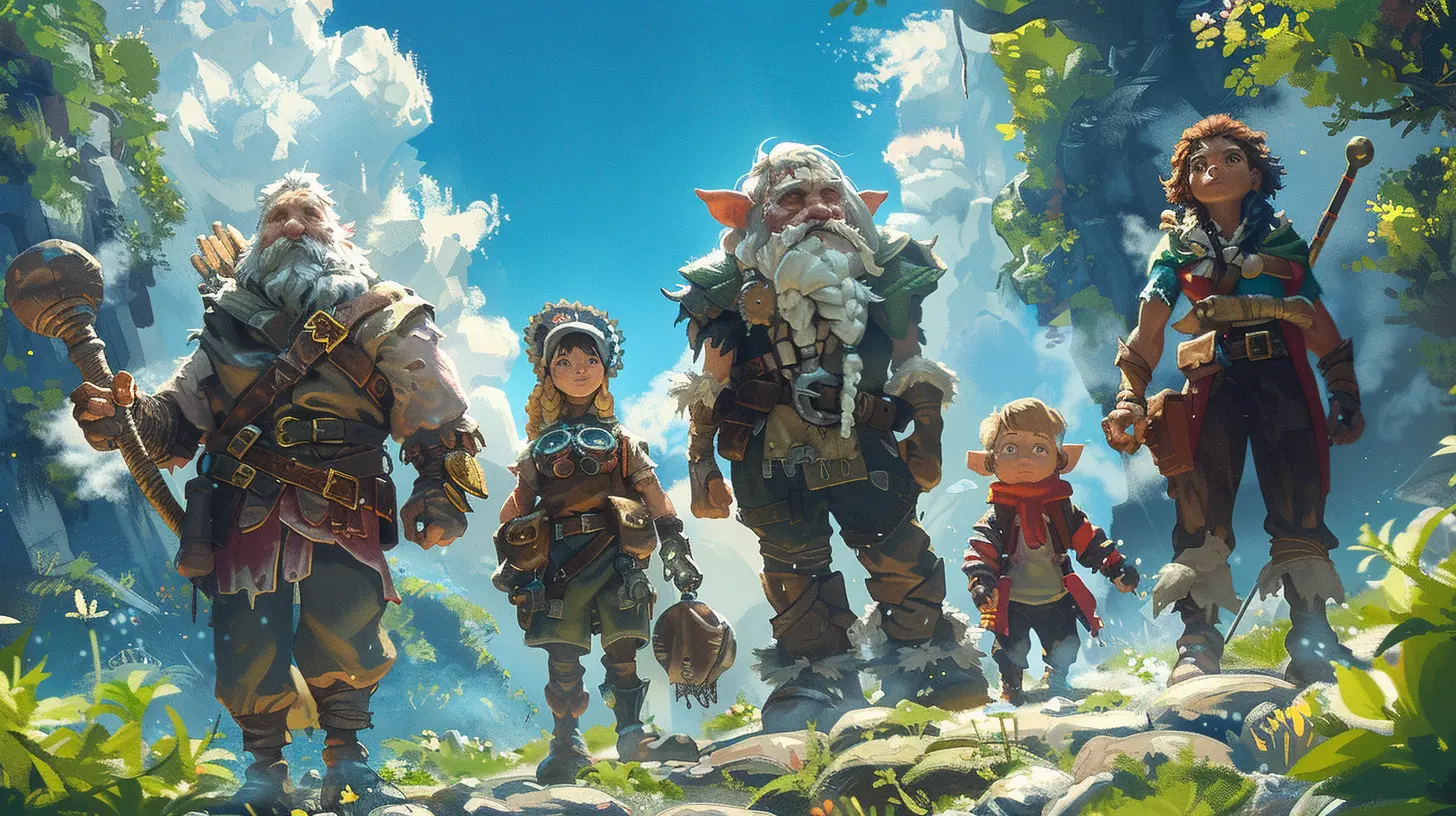Post-Campaign Strategies: What to Do After You've Funded Your Game
26 June 2025
So, you’ve done it! 🎉 After hours of blood, sweat, and ugly crying (don’t deny it), your game crowdfunding campaign is officially funded. Maybe you hit your target like a perfectly aimed headshot; maybe you smashed through stretch goals like a speedrunner on caffeine—either way, congrats! But don’t get too cozy basking in your victory dance. The hard truth? This is just the beginning.
Yep, successfully funding your game is like getting the golden ticket to Willy Wonka’s chocolate factory. Sure, you’re in the door, but now comes the real challenge: actually building the factory and delivering on all those sweet, candy-coated promises you made to your backers. No pressure, right?
Don't worry, though. I’ve got your back. Let’s break it down step-by-step (with a side of humor, of course) and talk about what you need to do after you’ve funded your game. Ready? Level up, and let’s get into it. 
1. Celebrate (But Not Too Much)
Listen, I’m not saying you should immediately pop open a bottle of your fanciest sparkling grape juice, but hey—you just nailed a big milestone, and that deserves some acknowledgment! Take a day or two to high-five your team, eat an unreasonable amount of pizza, and reflect on how far you’ve come.But here’s the catch. Don’t let the celebration turn into a week-long festival that burns through your campaign funds because, spoiler alert: Delivering on your promises will cost money. Lots of it. So, savor the moment, then get back to work. The grind don’t stop!
2. Update Your Backers Like They're BFFs
Remember those lovely humans who tossed their hard-earned cash your way, believing in your vision? Yeah, those folks. They probably want to know what's next. And hey, you owe them (literally and figuratively).Start with a clear, enthusiastic post-campaign update. Thank your backers (again, because gratitude is cool), share your excitement, and, most importantly, outline what’s coming next. Transparency here is 🔑. Are you locking down a production timeline? Testing mechanics? Working on new character designs? Tell them!
Oh, and don’t just update once and disappear into the game dev void. Regular updates = happy backers. Think of it like texting back a new crush: Keep them engaged, but don’t spam them. Nobody likes daily essays in their inbox.
3. Nail Down Your Budget (Before You Blow It All on Snacks)
Alright, time to tackle the not-so-fun stuff: budgeting. If your crowdfunding campaign was a chaotic, nerve-wracking party, this part is like cleaning up the aftermath. You’ve got all this glorious money now, but don’t treat it like Monopoly cash.Start by revisiting your campaign goals and expenses. How much will the art, development, marketing, and shipping cost? Did you account for taxes? What about hidden costs like software licenses or paying that one guy who insists on designing the perfect logo for your game's fake currency? (Pro tip: Don’t skimp on stuff like shipping—it’s a silent assassin of your funds.)
Pro tip: If numbers make your brain melt, consider hiring a financial consultant or using a fancy spreadsheet tool. Trust me, future-you will thank you when everything’s organized.
4. Build a Production Timeline (And Stick to It… Kinda)
Now that you have cash in the bank, it’s time to create a battle plan—err, I mean, a production timeline. Think of it as your game dev GPS. Without it, you’re just wandering around hoping you’ll miraculously end up at "Completed Game Blvd."Break your project into milestones: concept art, alpha build, beta testing, final polish, etc. Assign deadlines like a responsible adult (ugh, I know) and allocate resources. Things might go sideways because, let’s be real, game dev = chaos on a good day. But having a plan gives you something to fall back on when inevitable curveballs come your way.
5. Keep Your Hype Train Rolling
One of the biggest post-campaign mistakes? Letting that sweet pre-launch hype fizzle out like a cheap party sparkler. You’ve already got a built-in audience from your campaign—don’t let them wander off like NPCs with bad pathfinding.Start crafting a marketing strategy that keeps your fans engaged while attracting new ones. Think gameplay trailers, dev diaries, or even behind-the-scenes videos where you reveal how many times you’ve cried into your coffee during development. People love that “relatable dev struggles” stuff.
Oh, and social media is your BFF here. Post concept art, teasers, or even random memes about your game. Whatever you do, stay present. Remember: Out of sight, out of mind.
6. Reward Your Backers (AKA, Deliver the Swag)
If your campaign included rewards—physical or digital—you’d better start sorting that out ASAP. Backers don’t care if your team is swamped with deadlines; they want that exclusive vinyl soundtrack or plushie now. (Okay, maybe not now, but soon.)Step one? Use surveys to collect important info, like shipping details and t-shirt sizes. Platforms like Kickstarter even help you streamline this process. Step two? Work with reliable partners for production and shipping. Cutting corners here is like hiring the cheapest boss fight designer—you’ll pay for it later.
Oh, and communication is critical. If there are delays (and there will be), let your backers know as early as possible. Most people are chill as long as you’re honest with them.
7. Test Like a Mad Scientist
Ah, testing—the unsung hero of game development. Sure, you’ve got a killer concept and (hopefully) solid mechanics, but trust me, bugs will find you. No game is safe.Start with internal testing, where you and your team hunt down bugs like overzealous exterminators. Then, expand to external testers like friends, family, or that one neighbor who’s been asking too many questions about your game. If you’ve got room in your budget, consider hiring professional QA testers—they’re worth their weight in gold (or XP).
A buggy game at release will turn your backers into rage-fueled commenters faster than you can say, “patch update.” Test everything. Then test it again. And again. Seriously.
8. Prepare for the Post-Launch World
Launching your game isn’t the final boss—it’s more like entering New Game+. Once the game is out, there will be patches, DLCs, and, of course, customer support. Have a plan in place for handling feedback (good, bad, and troll-level ridiculous).Also, don’t forget to monitor your game’s performance. Are players screaming about unbalanced mechanics? Did your server catch fire on Day 1? Stay on top of things so your backers know you’re committed to making the game the best it can be.
9. Reflect and Learn (Because You’re a Smart Cookie)
When the dust settles, and the backers are (mostly) happy, it’s time to sit down with your dev team and reflect. What worked well during the campaign? What made you want to throw your laptop out the window? Use these experiences to level up your game dev skills for the future.Oh, and don’t forget to thank your backers one last time. Send out a heartfelt message, maybe throw in a little post-launch bonus (like free DLC), and remind them how awesome they are. They’re the real MVPs here.
10. Keep Dreaming Big
Finally, remember this: Funding your game was just one step on your journey. Whether this is your first project or your fiftieth, there’s always room to grow as a developer and storyteller. So, dream big, keep your creative juices flowing, and who knows? Maybe your next project will be the one that puts your name on the map.Now go forth, brave game dev, and crush it!
all images in this post were generated using AI tools
Category:
CrowdfundingAuthor:

Lana Johnson
Discussion
rate this article
1 comments
Dominic McCool
Great insights! Consider emphasizing community engagement post-campaign to maintain momentum. Regular updates and feedback loops can really strengthen backer relationships.
July 2, 2025 at 3:47 PM

Lana Johnson
Thank you for the suggestion! Community engagement is crucial for sustaining momentum, and we’ll definitely highlight the importance of regular updates and feedback in future discussions.


